
Keyword Strategy Guide
From Research to Selection [Part 1]
- Define clear, measurable content goals (e.g., increase organic traffic by 20%, improve conversion rate by 5%)
- Identify target audience segments and create personas
- Analyze audience needs, pain points, and search behavior
Example: If customer interviews reveal that 60% struggle with “quality content,” prioritize related keywords.
Step 2: Do Initial Keyword Research
2.1. Brainstorm Seed Keywords
- List broad topics related to your niche or industry
- Identify questions or problems your target audience might search for
- Consider different content types (how-to guides, comparisons, reviews) that align with your goal
2.2. Use Keyword Research Tools
Get insights into search volumes, competition, and keyword difficulty. Explore related keywords or LSI terms for broader relevance and context.
#1 Google Keyword Planner
- Get initial keyword ideas and search volumes
- www: https://ads.google.com/home/tools/keyword-planner/
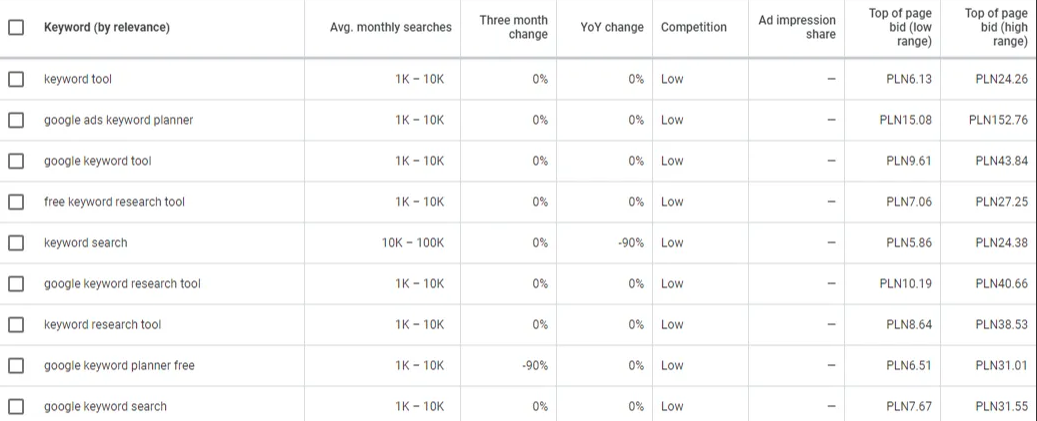
#2 Ahrefs
- Analyze keyword difficulty and search volume trends
- www: https://ahrefs.com/
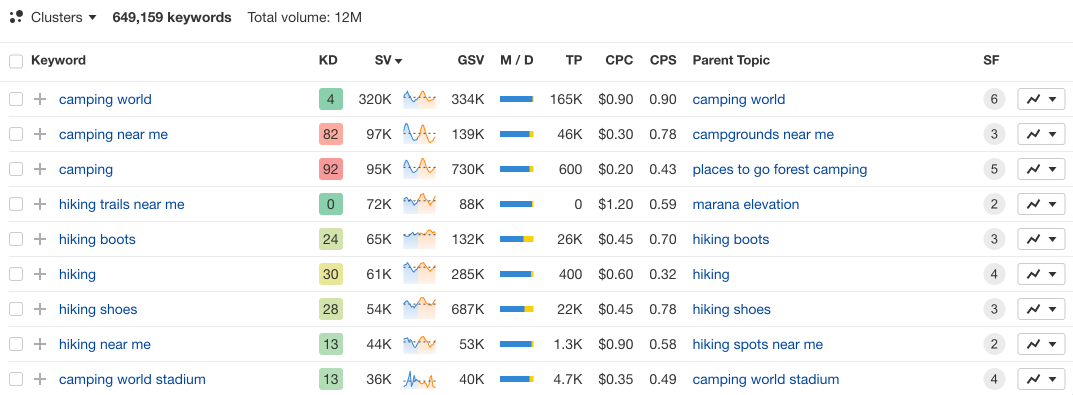
#3 Semrush
- Explore related keywords and content gap analysis
- www: https://www.semrush.com/
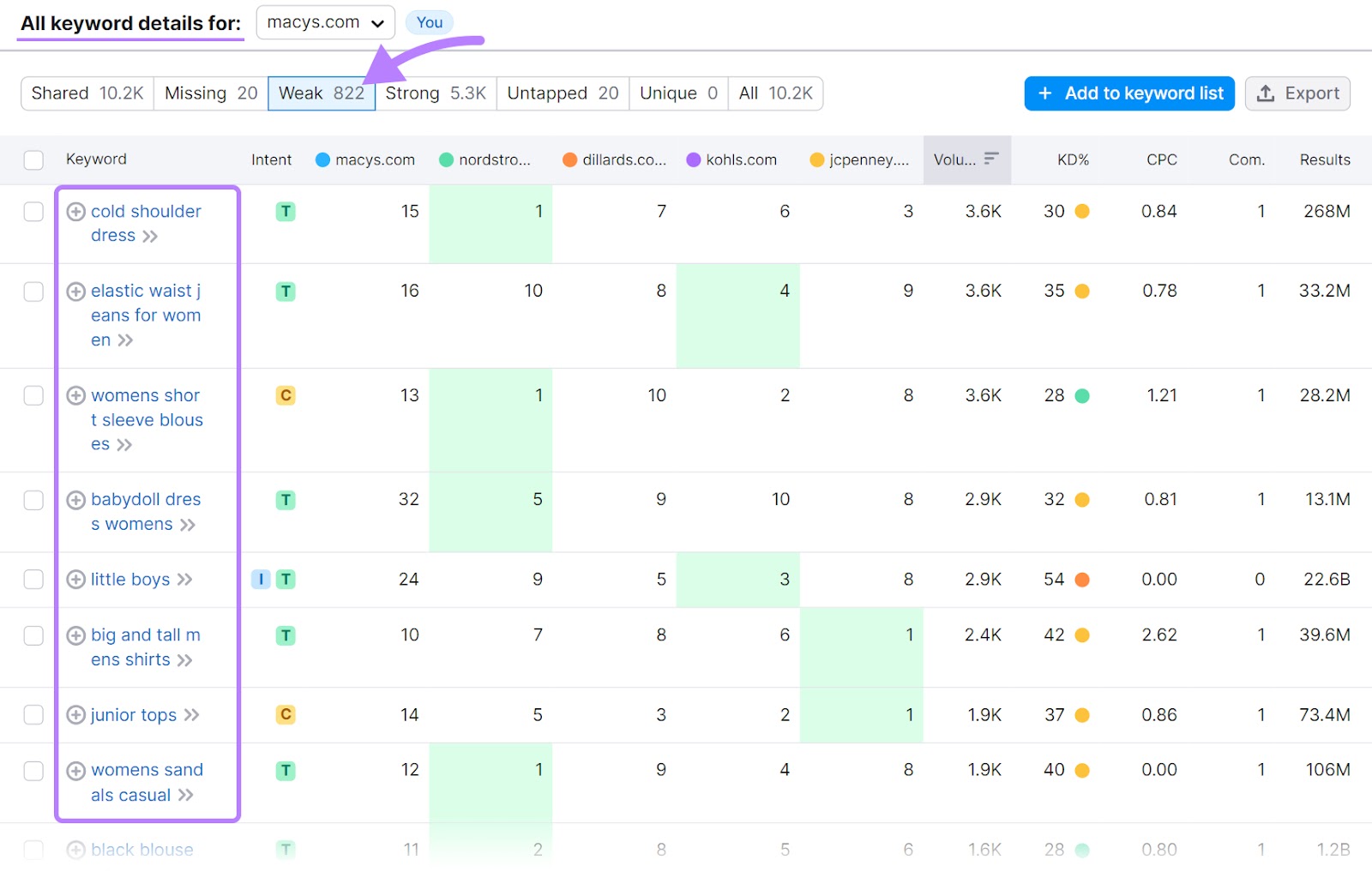
#4 Answer the Public
- Discover question-based keywords
- www: https://answerthepublic.com/
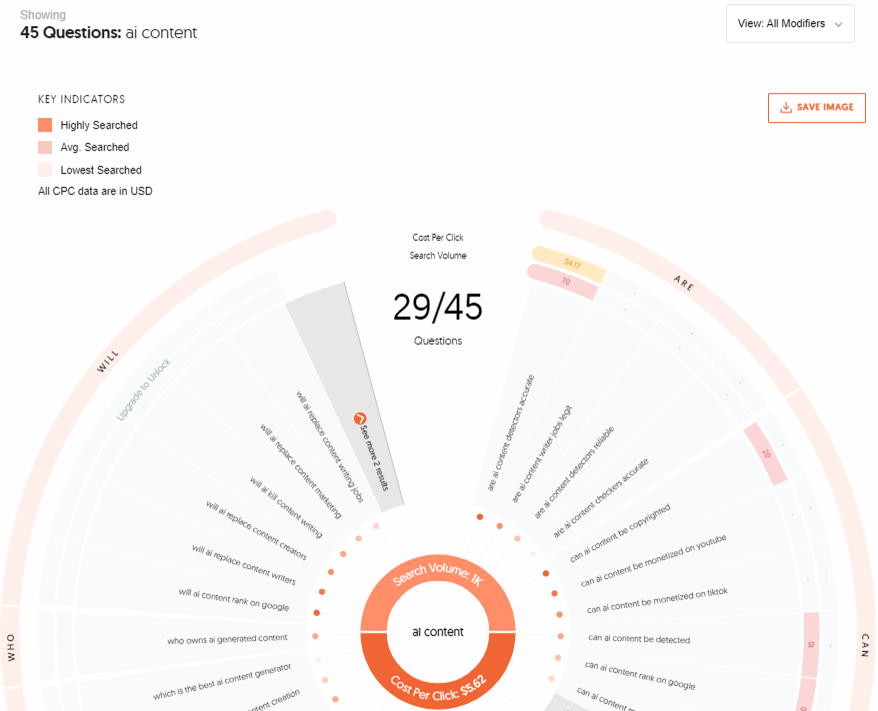
#5 Google Trends
- Identify seasonal trends and rising topics
- www: https://trends.google.com/trends/
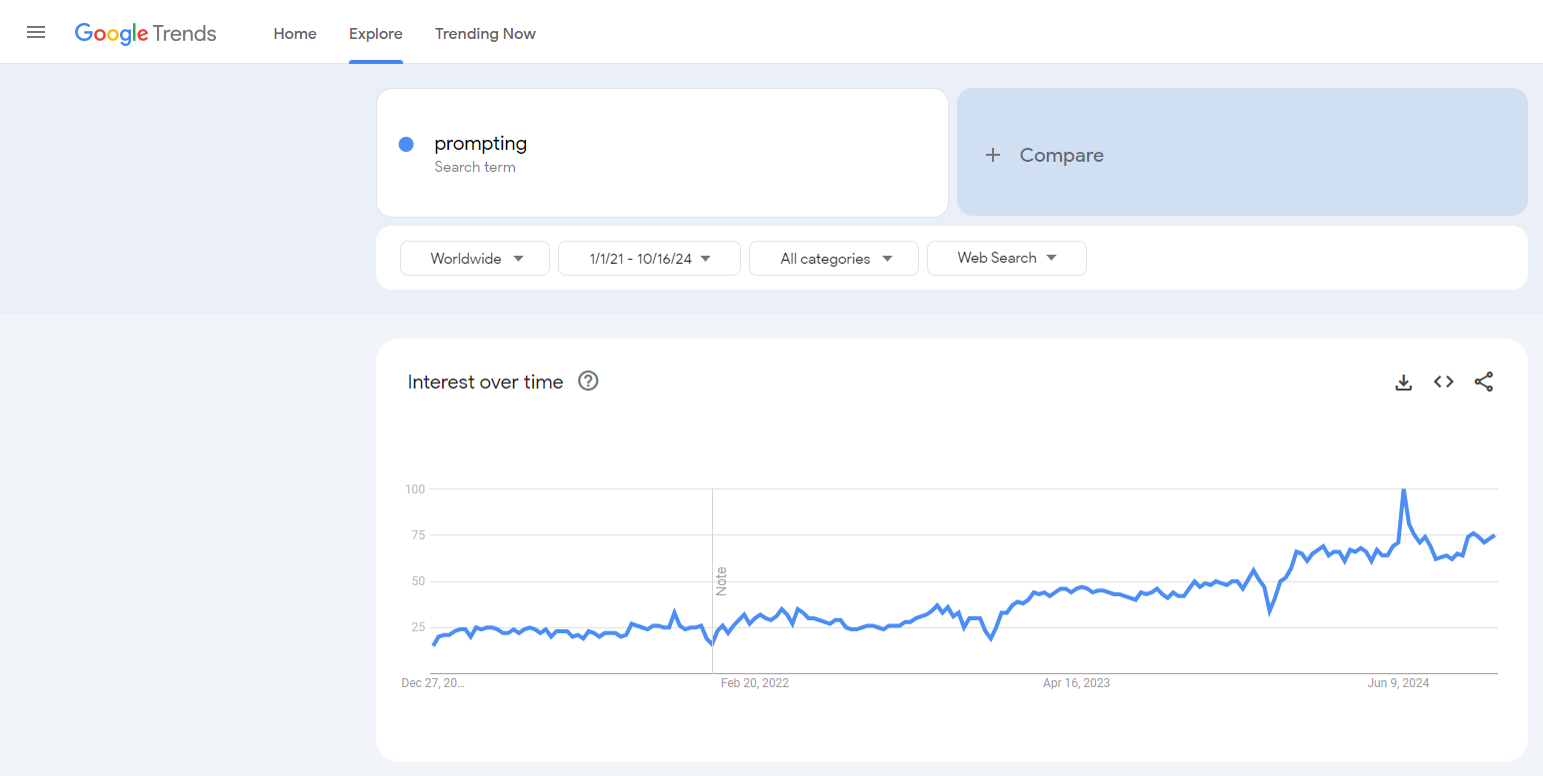
#6 Keywords Everywhere
- Paid Plugin that can help with on-the-fly keyword insights while browsing.
- www: https://keywordseverywhere.com/
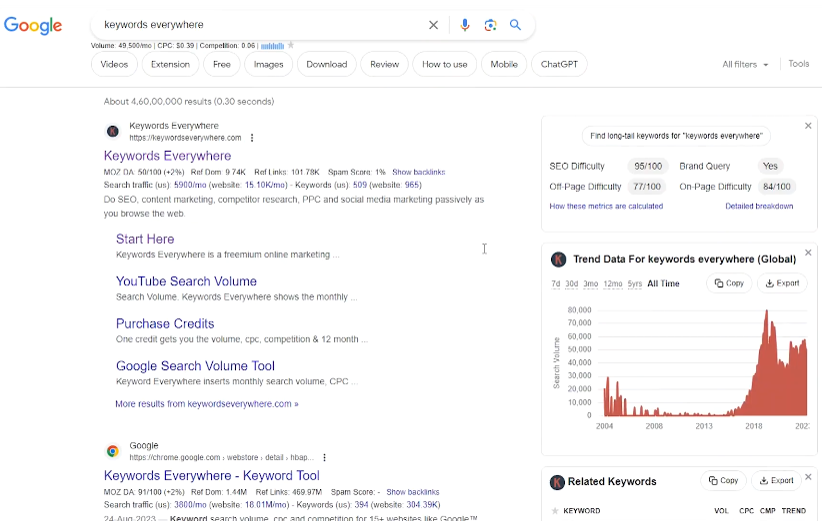
2.3. Use Search Engine Features
#1 Google Autosuggest
- Use Google Autosuggest for long-tail keyword ideas

#2 People Also Ask in Google
- Explore “People Also Ask” boxes for related questions
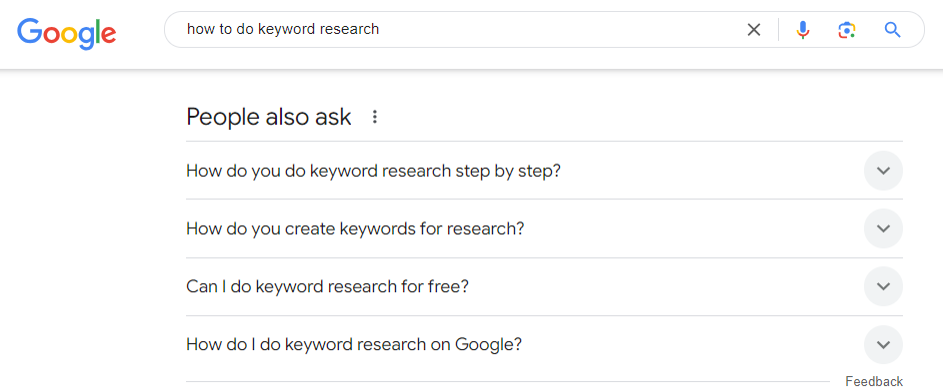
#3 AlsoAsked
- Find the questions people also ask
- www: https://alsoasked.com/
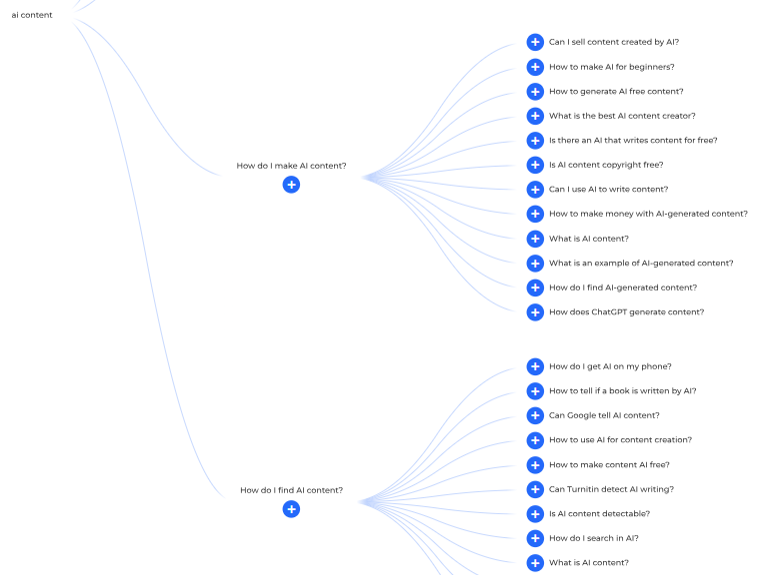
#4 Search related to
- Check “Searches related to” at the bottom of search results
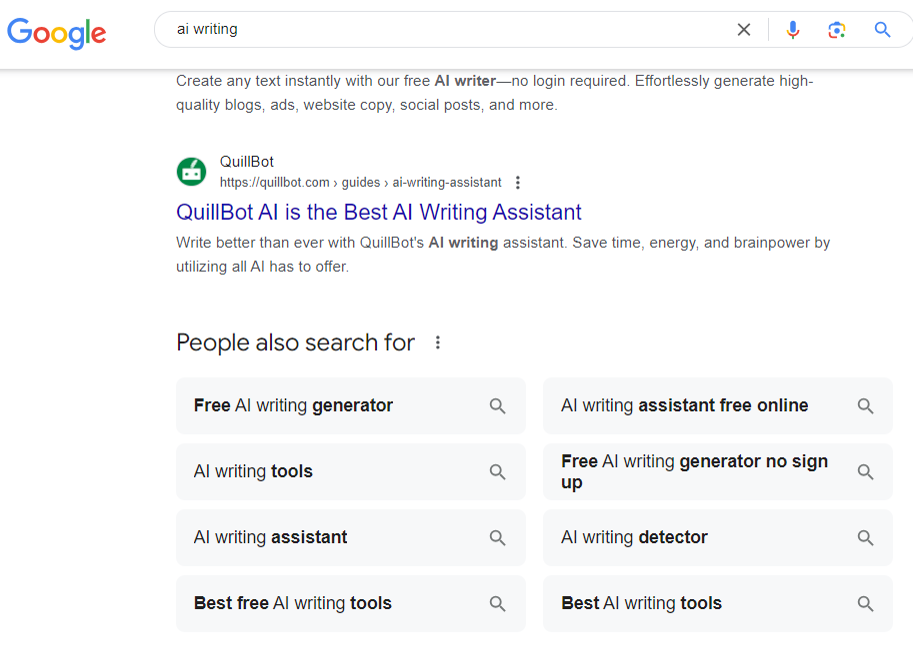
2.4. Analyze Competitors’ Keywords
- Identify top-ranking competitors for your target topics.
- Use tools to uncover the keywords they rank for and find keyword gaps you can capitalize on.
- Check:
- the top navigation, footer and product/feature pages
- the blog
- top pages
- Run Competitor Gap Analysis
- Find keywords your competitors are covering but you aren’t
- Find keywords your competitors haven’t identified
2.5. Browse online communities
- Review questions asked on Quora and Reddit and answers
- Analyze social media conversations and hashtags
- Check industry-specific online communities or group
2.6. Evaluate Keyword Trends
- Understand the popularity and seasonality of your keywords and spot emerging trends.
Step 3: Analyze Keywords and Refine
3.1. Evaluate Search Volume
- Review the monthly search volume for each keyword.
- Consider seasonal fluctuations in search volume
- Balance between high-volume keywords and more specific, lower-volume term
Example: A keyword with a monthly search volume 7,000 is more valuable than one with only 50 searches (Mind that SV is not the most important criteria).
3.2. Assess Keyword Difficulty
- Check keyword difficulty scores in research tools
- Evaluate the authority of top-ranking pages for each keyword
- Consider your website’s authority when choosing difficulty level
Example: A keyword difficulty score of 20/100 is easier to rank for than one scoring 80/100.
3.3. Assess Keyword Intent
- Categorize keywords by intent: informational, navigational, transactional, or commercial
- Ensure alignment between keyword intent and your content goals
- Review search results to understand what type of content ranks for each keyword
- Do results match the query?
- What type of content ranks?
- Are these websites relevant?
Example: Look for keywords with transactional phrases like “buy”, “deal”, or “get”. They have a clear commercial intent which brings your SEO closer to generating revenue.
3.4. Identify Long-Tail Keywords
- Focus on longer, more specific phrases
- Look for long-tail variations of your primary keywords
Example: Instead of “vacuum cleaners,” target “vacuum cleaners for pet hair” which might have a lower search volume but higher relevance to your product.
3.5. Competition Analysis
- Analyze the strength and number of competitors for a keyword to assess ranking difficulty
Example: If the top three competitprs have domain authority above 80, the keyword might be too competitive to rank for.
3.6. Compare Keywords Using Key Metrics
- Keyword: The actual search term
- Search Volume: Monthly search volume
- Keyword Difficulty: SEO difficulty score (e.g., 0-100)
- CPC (Cost Per Click): Estimated cost for paid ads
- Competition: Level of competition (Low, Medium, High)
- SERP Features: Presence of featured snippets, local pack, etc.
- Search Intent: Search intent category (Informational, Navigational, Commercial, Transactional)
- Priority: Your rating regarding each keyword’s priority [Low, Medium, High]
- High Priority: Relevant, high search volume, low difficulty, strong business value, and increasing trends.
- Medium Priority: Moderate search volume, medium difficulty, moderate business value, or stable trends.
- Low Priority: Low relevance, high difficulty, low search volume, or decreasing trends.
Sample simplified table format:
| Keyword | Search Volume | Keyword Difficulty | CPC [$] | Competition | SERP Features | Search Intent | Priority |
| how to do keyword research | 2,400 | 75 | 8.09 | High | No | Informational | Low |
| best keyword research tool for SEO | 480 | 67 | 8.86 | High | Yes | Commercial | Medium |
- Relevance Score: Your rating of how relevant the keyword is to your business and its business value (e.g., 1-10)
- Current Ranking: Your current position in SERPs (if ranking)
- Potential Traffic: Estimated traffic if ranking in top 3 positions
- Difficulty to Create Content: Your assessment of content creation effort (Easy, Medium, Hard)
- Trend: Search trend over time (Increasing, Stable, Decreasing)
???? Tips on how to deal with the table:
- Create this table for your top keyword candidates
- Use color coding or conditional formatting to highlight the best opportunities
- Regularly update this data to keep your keyword strategy current
Step 4. Select Keywords and Prioritize
4.1. Align Keywords with Business Goals
- Select keywords that support overall business objectives
- Prioritize keywords based on potential ROI and relevance to your offerings
- Consider keywords that target different stages of the customer journey
4.2 Group Keywords by Topics and Intent
- Create topic clusters around main themes
- Group similar keywords that can be targeted with a single piece of content (e.g., “best SEO tools” and “top SEO tools”).
- Ensure comprehensive coverage across your niche
4.3. Consider Location and Language
- Tailor research to target geographic regions and languages
- Incorporate local keywords if targeting specific areas
- Use location-based modifiers (e.g., “near me,” city names) where appropriate
4.4. Map Keywords to Marketing Funnel
- Categorize keywords by funnel stage: awareness, consideration, decision
- Ensure a balanced distribution of keywords across all stages
- Align keyword groups with appropriate content types for each funnel stage
4.5. Create a Keyword Priority List
- Rank keywords based on a combination of search volume, difficulty, and business value
- Identify quick wins (low-hanging fruit) for immediate implementation
- Plan for long-term, more competitive keywords
Final Keyword Selection Recap
- Relevance: Does the keyword directly relate to your content, products, or services?
- Search Volume: Is there sufficient search volume to justify targeting this keyword?
- Competition: Is the keyword difficulty manageable given your site’s current authority?
- Intent Match: Does the search intent align with your content goals and user needs?
- Business Value: Will ranking for this keyword contribute to your business objectives?
- Content Opportunity: Can you create high-quality, unique content around this keyword?
- Long-tail Potential: For competitive terms, are there valuable long-tail variations?
- Trend Consideration: Is the keyword stable or growing in popularity over time?
- SERP Features: Are there opportunities to capture featured snippets or other SERP features?
- Resource Alignment: Do you have the resources to create and promote content for this keyword?
- Quick Wins vs. Long-term Goals: Does your selection include a mix of both?
- Keyword Diversity: Have you included a range of keyword types (informational, transactional, etc.)?